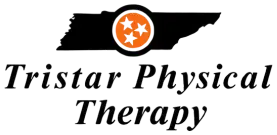Table of Contents
- Understanding Rotator Cuff Impingement
- The Role of Physical Therapy in Rotator Cuff Impingement
- Surgical Treatment
- Conclusion
The rotator cuff is a group of four muscles that play a crucial role in stabilizing the shoulder joint and facilitating arm movement. However, this area of the body is susceptible to impingement or pinching, which can result in significant pain and restricted arm mobility. One of the most common causes of shoulder pain is rotator cuff impingement syndrome, also known as subacromial impingement syndrome (SAIS). Fortunately, physical therapy (PT) offers several effective treatments for this condition.
Understanding Rotator Cuff Impingement
The supraspinatus muscle is one of the four rotator cuff muscles responsible for elevating the arm away from the body and overhead. It originates on the shoulder blade and passes through a small tunnel formed by the acromion (the outer tip of the shoulder blade) and the head of the humerus (upper arm bone) before attaching to the arm. When the space between these structures narrows, the supraspinatus muscle can become pinched, irritated, or even torn. Other structures in the shoulder, such as the subacromial bursa (a fluid-filled sac) and other rotator cuff muscles, may also be affected.
Collectively, this condition is known as rotator cuff impingement syndrome, and it can have various causes, including:
- Anatomical abnormalities in the shape or orientation of the acromion.
- Bony changes in the acromioclavicular joint, where the acromion joins the collarbone.
- Tightness in the shoulder capsule, the strong connective tissue that surrounds the shoulder.
- Weakness in the rotator cuff or shoulder blade muscles.
- Increased flexion or kyphosis in the mid-back (thoracic spine).
Regardless of the cause, rotator cuff impingement syndrome can lead to several symptoms, such as:
- Gradual onset of shoulder pain lasting for weeks or months.
- Pain along the front or side of the shoulder, sometimes radiating down the upper arm.
- Pain when moving the arm to the side or overhead.
- Pain that disrupts sleep or prevents lying on the affected side.
- Difficulty reaching behind the back.
- Shoulder stiffness or weakness.
The Role of Physical Therapy in Rotator Cuff Impingement
If you experience significant and persistent shoulder pain, it is crucial to seek an accurate diagnosis from a healthcare provider. Some cases, such as rotator cuff tears, may require more extensive interventions, including surgery. However, for rotator cuff impingement, physical therapy is often an effective treatment option.
Upon diagnosis, your healthcare provider may advise modifying activities to avoid movements that aggravate the condition. Nonsteroidal anti-inflammatory medications (NSAIDs) may also be prescribed to manage pain. In some cases, a cortisone injection may be administered, but caution must be exercised as it can cause tendon breakdown and is not typically a standalone treatment.
Physical therapy, particularly outpatient PT, plays a significant role in addressing the root causes of rotator cuff impingement. While each case is unique, PT commonly focuses on the following interventions:
Stretching Exercises
Poor posture, particularly a slumped shoulder position, can narrow the tunnel through which the supraspinatus muscle travels and increase the risk of impingement. Therefore, a substantial portion of rotator cuff impingement treatment involves stretching the muscles that become tight due to poor posture.
Physical therapists typically concentrate on improving the flexibility of muscles involved in shoulder movement, such as the pectoralis major, pectoralis minor, scalenes, trapezius, and sternocleidomastoid. They may use techniques like soft tissue massage and passive stretching during therapy sessions and provide a home stretching program for continued progress between sessions. By enhancing the flexibility of these structures, posture can be improved, reducing pinching and irritation on the rotator cuff muscle.
Strengthening Exercises
Weakness in the muscles supporting the shoulder blade (scapular muscles) can contribute to rounding of the shoulders, reduced space beneath the acromion, and ultimately rotator cuff impingement. Therefore, one of the primary goals of PT for rotator cuff impingement is to strengthen these muscles.
Physical therapists will teach resistance exercises that target muscles like the rhomboids, lower trapezius, middle trapezius, and serratus anterior, which help position the shoulder blades correctly. Additionally, restoring normal shoulder range of motion is essential, so PT may initially focus on gentle, pain-free active shoulder movements, gradually progressing to strengthening exercises for the rotator cuff muscles to enhance joint stability.
Joint Mobilizations
Restricted movement in the shoulder, shoulder blade, neck (cervical spine), or mid-back (thoracic spine) can alter the mechanics of the shoulder joint and contribute to rotator cuff impingement. To address these limitations, physical therapists may perform joint mobilizations as part of therapy.
During joint mobilizations, manual pressure is applied to the affected area in the direction of stiffness. The applied force can range from gentle oscillating movements to firm and forceful pressure, depending on the goal of the mobilization. Research has shown that incorporating manual therapy techniques like joint mobilizations into physical therapy sessions can significantly improve pain associated with rotator cuff disorders, including impingement.
Surgical Treatment
In many cases, physical therapy and other conservative treatments effectively address the symptoms of rotator cuff impingement. However, there are instances where PT alone may not provide sufficient relief, and surgical intervention becomes necessary.
Subacromial decompression is a common surgical procedure for rotator cuff impingement. This operation involves removing a portion of the acromion to create more space in the anatomical tunnel through which the supraspinatus muscle passes. Depending on the condition of the shoulder structures, other surgical interventions like rotator cuff repair or debridement may also be required. An orthopedic surgeon can assess your arm and shoulder thoroughly to determine the appropriate treatment.
Conclusion
Rotator cuff impingement syndrome is a prevalent cause of shoulder pain and limited arm mobility. Physical therapy plays a crucial role in alleviating pain and restoring normal function. Physical therapists focus on stretching tight muscles, strengthening scapular muscles, and mobilizing joints to address the root causes of impingement. When conservative treatments like PT are ineffective, surgical intervention may be necessary. Early treatment and collaboration with a physical therapist can help overcome this debilitating condition and enable a return to daily activities.
References:
- Kuhn JE. Exercise in the treatment of rotator cuff impingement: a systematic review and a synthesized evidence-based rehabilitation protocol. J Shoulder Elbow Surg. 2009;18(1):138-160. doi:10.1016/j.jse.2008.06.004
- Michener LA, McClure PW, Karduna AR. Anatomical and biomechanical mechanisms of subacromial impingement syndrome. Clin Biomech (Bristol, Avon). 2003;18(5):369-379. doi:10.1016/s0268-0033(03)00047-0
- Murphy RJ, Carr AJ. Shoulder pain. BMJ Clin Evid. 2010;2010:1107. Published 2010 Aug 2.
- Walther M, Werner A, Stahlschmidt T, Woelfel R, Gohlke F. The subacromial impingement syndrome of the shoulder treated by conventional physiotherapy, self-training, and a shoulder brace: results of a prospective, randomized study. J Shoulder Elbow Surg. 2004;13(4):417-423. doi:10.1016/j.jse.2004.01.035

